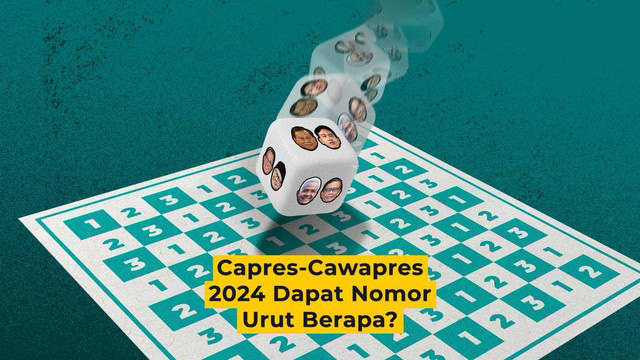How Ancient Discoveries Influence Modern Game Design #4
1. Introduction to Ancient Discoveries and Their Cultural Significance
Throughout human history, ancient discoveries—ranging from mythologies and artifacts to natural phenomena—have played a crucial role in shaping civilizations’ identities and worldviews. These discoveries are more than relics; they are enduring symbols of human curiosity and ingenuity, influencing cultural narratives, art, and even modern entertainment. Recognizing their significance helps us understand how the foundational ideas of the past continue to inspire contemporary innovations, including the realm of game design.
In the context of modern entertainment, integrating historical knowledge offers depth and authenticity. It allows game creators to craft immersive worlds that resonate with players by tapping into shared cultural symbols and stories. This intersection of history and entertainment is exemplified in how ancient concepts—mythology, symbolism, and artifacts—serve as rich sources for developing engaging game mechanics and compelling narratives.
2. The Intersection of History and Modern Entertainment
Evolution of Storytelling from Ancient Myths to Modern Narratives
Ancient myths, such as Greek legends of gods and heroes, laid the groundwork for narrative storytelling. These stories conveyed moral lessons, explained natural phenomena, and reinforced cultural values. Over centuries, these myths evolved into complex literary and cinematic stories, forming the backbone of modern storytelling across books, movies, and video games. For example, mythological themes like heroism and divine intervention continue to inspire game plots, creating familiar yet engaging frameworks for players.
The Role of Artifacts and Symbols in Game Mechanics and Aesthetics
Historical artifacts—such as coins, jewelry, and relics—serve not only as visual inspiration but also influence game mechanics. For instance, artifacts like gold staters from ancient Greece symbolize wealth and reward, inspiring in-game currency systems that mirror real-world economic principles. Symbols like lucky charms or talismans, rooted in cultural traditions, are incorporated into game aesthetics to evoke a sense of mysticism or luck, enhancing player engagement.
Case Study Introduction: “Le Zeus” as a Modern Game Inspired by Ancient Mythology
While “Le Zeus” exemplifies how ancient mythology can underpin modern game design, it serves as an illustrative case rather than the sole focus. This game demonstrates how integrating mythic elements, symbols, and historical artifacts creates a layered experience that bridges past and present.
3. Fundamental Concepts Derived from Ancient Discoveries in Game Design
Mythology as a Narrative Framework
Mythologies from various cultures—Greek, Egyptian, Norse—provide a treasure trove of characters, stories, and themes that can be adapted into game narratives. For example, Greek gods like Zeus, Athena, and Hades offer archetypal characters that embody specific virtues or vices, serving as protagonists, antagonists, or quest-givers. These mythic figures enable game designers to craft quests that resonate with universal themes of heroism, betrayal, or redemption.
Symbolism and Rare Phenomena as Game Elements
Ancient cultures often attributed special significance to rare natural phenomena, such as eclipses or celestial alignments, viewing them as signs or omens. In game design, such phenomena can be translated into mechanics that involve luck, rarity, or chance. For example, the four-leaf clover, historically regarded as a symbol of luck, is frequently incorporated as a rare item that influences gameplay or rewards—adding an element of unpredictability and excitement.
Cultural Artifacts Influencing Game Economy and Rewards
Artifacts like gold staters from ancient Greece symbolize wealth and trade, laying a foundation for in-game economies. Many modern games incorporate currency systems inspired by these artifacts, where rarity and authenticity influence value and player motivation. Such systems add depth and educational value, connecting players with historical economic practices.
4. How Specific Ancient Discoveries Shape Modern Game Mechanics
Mythological Characters and Stories as Archetypes and Quests
Game characters often draw from mythological archetypes—heroes, tricksters, gods—creating relatable yet fantastical personas. Quests may mirror mythic journeys, such as the hero’s quest to retrieve a sacred relic or defeat a divine adversary. These elements foster immersive storytelling rooted in ancient narratives, yet adapted for modern audiences.
Rare Natural Phenomena as Gameplay Features
Incorporating phenomena like the luck of a four-leaf clover or solar eclipses into gameplay mechanics can introduce elements of chance, rarity, and strategic decision-making. For instance, a game might feature a special event triggered by a celestial alignment, encouraging players to explore real-world phenomena and their symbolic meanings.
Economic Models Based on Ancient Currency Systems
Using ancient currencies like gold staters as inspiration, game economies can simulate historical trade and wealth accumulation. This not only enhances realism but also educates players about ancient economic practices, fostering a deeper appreciation for history while engaging in strategic resource management.
5. Case Study: “Le Zeus”—Blending Ancient Discoveries with Modern Game Design
Concept Origin Rooted in Greek Mythology and Artifacts
“Le Zeus” draws inspiration from Greek mythology, incorporating mythic figures and symbols like lightning bolts, divine relics, and sacred temples. These elements serve as core visuals and mechanics, creating an environment that feels both ancient and timeless.
Incorporation of Symbolic Elements
Lucky charms, mythological creatures, and divine symbols are woven into gameplay, influencing outcomes and rewards. For example, a player collecting certain relics might unlock special powers or bonuses, mimicking ancient beliefs in talismans and divine favor.
Gameplay Mechanics Inspired by Ancient Economic Systems and Mythic Storytelling
The game features an economy based on ancient currencies, where players trade relics and artifacts, mirroring historical trade practices. Mythic storytelling drives quests and character development, creating a layered experience that educates while entertaining.
6. Non-Obvious Influences and Deeper Connections
Psychological Impact of Ancient Symbols
Research indicates that ancient symbols—such as the Greek omega or Egyptian ankh—can evoke subconscious associations of power, protection, or luck. Incorporating these symbols in game design can enhance player immersion and emotional engagement, making the experience more memorable and meaningful.
Cultural Preservation and Educational Value
Games rooted in historical themes serve as educational tools, preserving cultural heritage. By integrating accurate facts and artifacts, designers can foster curiosity and respect for ancient civilizations, turning entertainment into a learning experience.
Serendipity and Rarity in Game Dynamics
Inspired by phenomena like four-leaf clovers, the role of serendipity introduces unpredictability and excitement. Rare items or events create a sense of discovery, encouraging continued engagement and reinforcing the allure of the unknown—an enduring principle derived from ancient beliefs about luck and fate.
7. Broader Implications for Future Game Development
Fostering Innovation through Ancient Discoveries
Understanding and applying ancient concepts can lead to innovative game mechanics, such as culturally inspired worlds, myth-based puzzles, or historical economic systems. These elements add uniqueness and authenticity, appealing to niche audiences eager for educational yet entertaining experiences.
Ethical Considerations
Respectful representation of cultures is paramount. Developers should collaborate with cultural experts to ensure accuracy and avoid stereotypes, fostering appreciation rather than appropriation. This ethical approach enhances credibility and educational value.
Emerging Genres Rooted in Archaeology and History
The future may see the rise of genres such as archaeological adventure, mythic role-playing, or educational simulators that deepen players’ understanding of ancient worlds. These genres can serve as platforms for cultural preservation and cross-disciplinary learning.
8. Conclusion: The Symbiosis of Ancient Discoveries and Modern Creativity
“Ancient discoveries are the roots of modern innovation. When thoughtfully integrated into game design, they not only entertain but also educate, fostering a deeper appreciation for our shared human heritage.”
In summary, the rich tapestry of ancient knowledge continues to inspire today’s game developers. Whether through mythological storytelling, symbolic artifacts, or economic systems, these historical elements lend authenticity and a sense of timelessness to modern games. As the industry evolves, leveraging ancient discoveries responsibly and creatively will open new horizons for educational and culturally meaningful entertainment. For those interested in exploring how these principles manifest in practice, exploring games like adaptive autoplay picks can offer inspiring examples of this enduring influence.


















